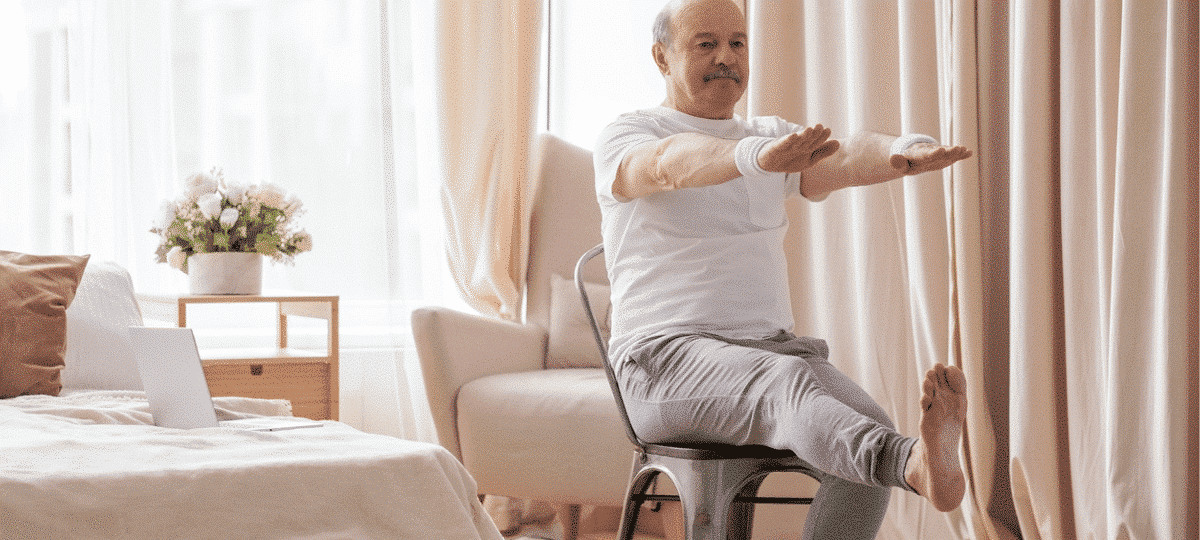Ah, spring cleaning. How else would the garage floor shine, closet space open up and windows sparkle? This Rite of Spring can bring great satisfaction and a sense of well-being. We shouldn’t lose sight of safety though. Here are five Spring Cleaning Must-Dos to add to your checklist:
Use the Right Cleaning Methods
Wear rubber gloves to protect your skin from harsh chemicals. Senior skin is thinner and more sensitive to chemicals skin irritations and allergic reactions that can result from them.
In fact, you can make your own eco-friendly, super-safe cleaning solution by combining 1 2/3 cups of baking soda with ½ cup of dish soap. Stir in ½ cup of water followed by 3 tablespoons of white vinegar. Put this solution in a squirt bottle for ease of use.
Use tools that minimize a falling hazard, such as a duster with an extender to dust walls and other high places or a squeegee for your windows instead of using paper towels and window cleaner.
Use a bagged vacuum instead of a bagless one. According to recent Consumer Reports, bagged vacuums trap pet hair and other matter more effectively than bagless ones. You’ll avoid the fall risk involved in bending over to pick up particles left behind by a bagless vacuum. Use a stand-up dustpan for sweeping floors.
De-clutter
Cleaning off surfaces, paring down closets, throwing out junk: organizing your home life can bring a sense of calm—especially for seniors. That’s because clutter is shown to raise levels of the stress hormone cortisol, and seniors have a more difficult time clearing their bodies of cortisol, according to research at Massachusetts General Hospital. Seniors also have a reduced lung capacity that hampers their stress response–increasing their sensitivity to environmental stress trigger like clutter. Finally, clutter poses a falling risk for seniors, according to the Centers for Disease Control.
In fact, be careful when de-cluttering, as people can trip in the cleaning process. That’s why it’s important to get friends and family to help. Go room-by-room and make sure every space is clear. Special family heirlooms and nostalgia items can be tucked away in a pretty storage trunk so that your loved one knows her valuables are still accessible, even if they’re safely out of sight.
Ensure Fire Safety
You should replace the batteries in your smoke detectors every spring and fall. But fire safety measures should go well beyond that practice, according to the National Fire Prevention Protection Association. Here are other things to do this spring (and year-round) to ensure fire safety:
- Install smoke detectors inside every bedroom, outside each sleeping area, and on every level of the home. Test them at least once a month by pushing the test button.
- Have a fire drill and be sure everyone knows the escape plan. Practice it at night and during the day.
- Teach everyone in the household how to use a fire extinguisher.
- Keep the stovetop area free of anything that could catch fire, from oven mitts to wooden spatulas. Seniors who tend to be slightly distracted or forgetful may need a clearly designated spot, far from the stovetop, to place all such items.
- Clean the lint filter in the dryer before and after each load of laundry. Remove lint that has collected around the drum, too.
- Keep your grill clean by removing grease or fat buildup from the grills and in trays below the grill.
Clean the Air
Seniors with asthma may be even more sensitive to indoor air pollutants, like dust, than younger people with asthma, according to the National Institutes of Health (NIH). Some people even develop allergies or asthma for the first time in their senior years, says the NIH. One key measure to take: Replace your HVAC filter; this is especially important after the wintertime dust build-up in air ducts. Use a HEPA filter, which removes dust, mold, and pollen. Your vacuum, too, should have a HEPA filter in it. “The filter traps the matter coming in, so it won’t go back into the air,” says Sanaz Eftekhari, vice president of corporate affairs and research at The Asthma and Allergy Foundation of America.
Clean Those Hidden Sources of Germs in the Kitchen
Cleaning out the fridge usually makes the list for spring cleaning. However, cleaning out the fruit bowl or scrubbing the can opener? Not so much. People tend to overlook key kitchen items that turn out to harbor bacteria, according to recently published reports by scientists. The following kitchen items come into direct contact with food and are found to be the “germiest,” carrying bacteria linked to foodborne illness, including E. coli and salmonella:
- Can openers
- Vegetable and meat compartments in the fridge
- Blender gaskets
- Rubber spatulas
- Rubber-sealed food storage containers
- Fruit bowls
It’s best to use disinfectant wipes, followed by hot soapy water, to clean these items. Remember that seniors are more vulnerable to foodborne illness. “As people age, the immune system weakens and various organs become sluggish and less able to rid the body of pathogens. This increases the likelihood of foodborne illness in seniors,” says FDA spokesperson Howard Seltzer of the Center for Food Safety and Applied Nutrition.




